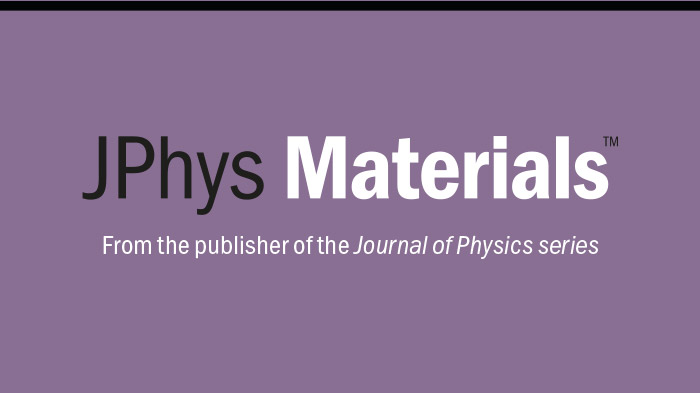JPhys Materials, a journal focusing on interdisciplinary research marrying chemical, physical and engineering aspects of materials study, publishes its first issue this week.
The new IOP Publishing journal showcases the most significant and exciting developments in materials science research, all of which are published open access to encourage maximum collaboration, reproducibility and dissemination of research.
In the first issue of JPhys Materials, a team from Imperial College London, the National Physical Laboratory (UK), and the King Abdullah University of Science and Technology (Saudi Arabia) investigate using adhesion lithography (a-Lith) for the development of nano-gap organic light emitting diodes on a variety of substrates including glass and plastic.
They suggest a-Lith offers excellent compatibility with different substrate materials including temperature sensitive and flexible plastic substrates, and expect the work to pave the way to a wide range of applications in the emerging fields of large-area, nanoelectronics.
Elsewhere in the issue:
- An Australian team examine the characterisation of defective, nanoporous and amorphous materials
- Researchers from China and France report on the role of thermal expansion heterogeneity in the cryogenic rejuvenation of metallic glasses
- Authors from Japan and France introduce a new route to the high-yield chemical vapor deposition of graphene on thick non-catalyst materials
- A multinational team of researchers examine ultra-long wavelength Dirac plasmons in graphene capacitors
- European and Russian scientists look towards microscopic control of the magnetic exchange coupling at the surface of a topological insulator
JPhys Materials is led by Editor-in-Chief Professor Stephan Roche, from the Catalan Institution for Research and Advanced Studies (ICREA) and the Catalan Institute of Nanosciences and Nanotechnology (ICN2).
Professor Roche said: “In recent decades, an endless portfolio of both newly discovered and synthesised materials have emerged from research laboratories across the world. These range from low-dimensional structures, through (supra) molecular architectures with optimised optical and chemical properties, to engineering soft matter and hybrid compounds.
“JPhys Materials will support the flow and exchange of knowledge across existing and emerging communities, maximising the impact of published research.”
Dr Tim Smith, Associate Director at IOP Publishing, said: “We are very excited about the launch of a major addition to IOP’s materials science portfolio and the Journal of Physics series, and one that will further extend our publishing profile into an exciting and rapidly emerging new area.
“Our ambitions for JPhys Materials are high and a priority will be to develop the journal’s content, delivery and services in close consultation with the community to ensure that it meets the evolving needs of all aspects of the field.”
The journal’s coverage will extend across:
- Materials characterisation
- Materials properties
- Computational materials science and modelling
- Materials applications
- Synthesis and fabrication
The issue can be accessed at www.iopscience.org/jphysmaterials
